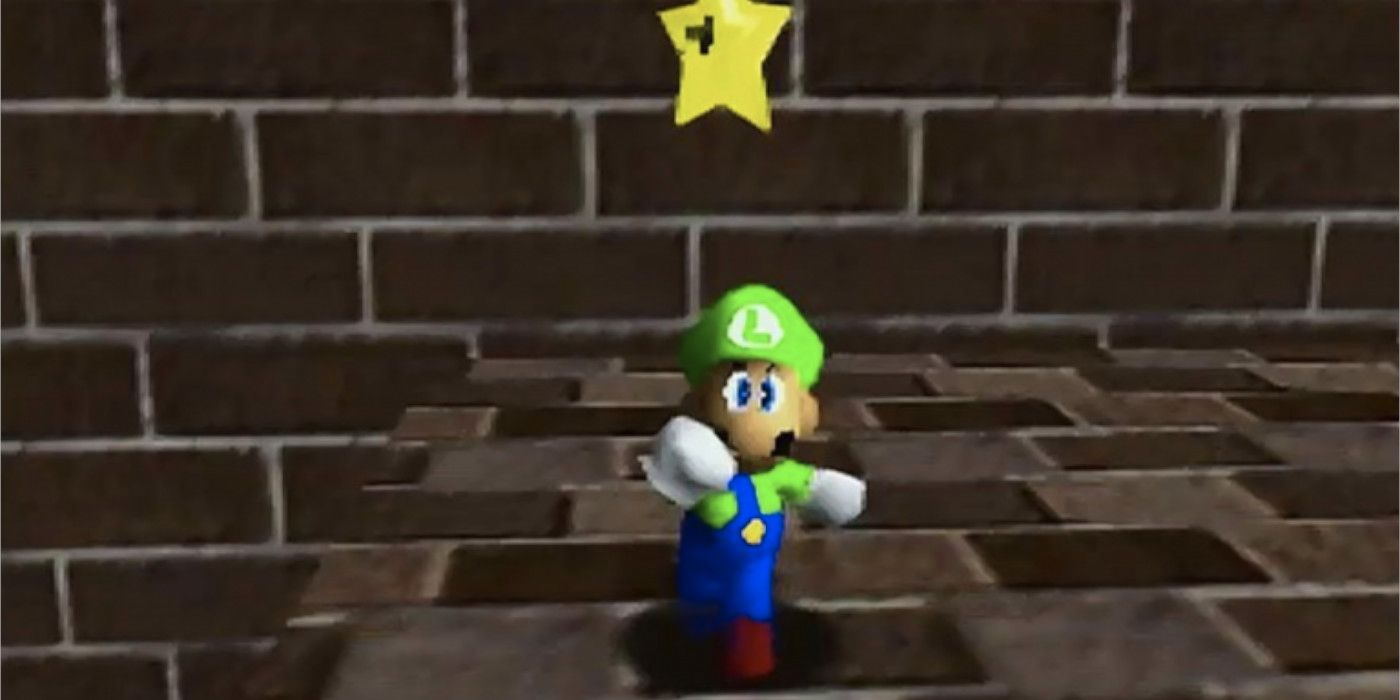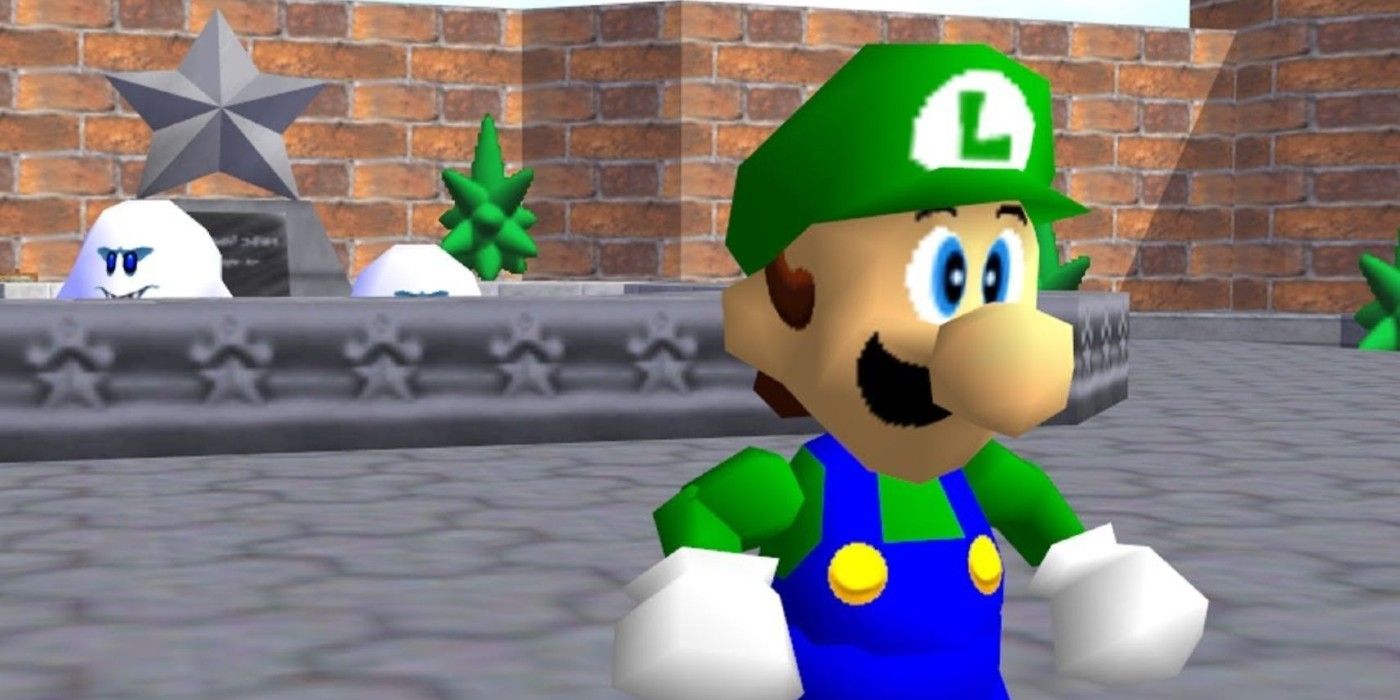The video game community loves a good Easter egg. Video game developers have spent decades learning to entice and delight fans by hiding secret messages, objects, and references in games that fans can discover and enjoy. Super Mario 64, for instance, had an excellent Easter egg in the form of Yoshi. If players collected all 120 Power Stars in Super Mario 64, they could climb to the roof of Princess Peach's Castle and talk to Yoshi, who would give Mario a hundred lives as a reward. However, Super Mario 64 also contains another mystery that many fans interpreted as a cryptic Easter egg for more than 20 years. That mystery is L is Real 2401.
Super Mario 64's L is Real 2401 is a bizarre urban legend that was once part of a major longstanding belief that Super Mario 64 players could unlock Luigi as a playable character. The phrase comes from a plaque on a statue near the entrance to the Big Boo's Haunt course in Peach's Castle. The text on the plaque is very blurry, but many fans felt strongly that the plaque contained the enigmatic phrase L is Real 2401. At a glance, this phrase seems completely meaningless, but Super Mario fans quickly leaped to an interpretation. They believed that L is Real meant that Luigi existed as an Easter egg in Super Mario 64 and that the number 2401 had something to do with finding him.
RELATED: Super Mario 64 LEGO: All the Courses From the Game That Come in the Set
Notable Interpretations of L is Real 2401

Many Super Mario 64 players believed that the "2401" in L is Real 2401 set some sort of objective for players to complete that would unlock Luigi. For instance, many fans speculated that players had to collect 2401 coins to make Luigi appear. Collecting 100 coins in each Super Mario 64 course famously earns players extra Power Stars, but they didn't seem to do much for Mario's long-lost brother. Another theory suggested that 2401 meant that players had to run around the statue 2401 times, which many players found too laborious to test or disprove, allowing it to stand as a rumor.
It's worth noting that L is Real 2401's interpretations actually didn't just extend to Super Mario 64. Some fans believed that another line on the plaque said 'in paper M', leading them to read the plaque as a teaser about Luigi appearing in 2001's Paper Mario. However, due to Luigi's minor role in Paper Mario and issues with interpreting 2401 as a date, the Paper Mario theory remained less prevalent. Instead, Super Mario fans kept circulating rumors that Luigi was hidden away in Mario 64, just waiting to be found by whoever could interpret 2401. Doubts about the plaque actually saying anything remained, however, even leading IGN to offer a bounty for anyone who could prove that L is Real 2401 was real itself.
RELATED: All the Different Versions of Super Mario 64 and Which One You Should Play
L is Real 2401 and the Nintendo Gigaleak

In a 1996 interview, Shigeru Miyamoto revealed that Nintendo once planned Luigi to appear in Super Mario 64 for its planned two-player multiplayer, but that Luigi was scrapped for memory reasons. Players still kept looking for him in the final version, but nobody ever thoroughly proved L is Real 2401. However, those two facts would come together in 2020 when the Nintendo Gigaleak revealed tons of information and data that fans had never seen before. Among those things was a Super Mario 64 model for Luigi. To the delight of Super Mario theorists, the Gigaleak dropped on July 2020, 24 years and 1 month after Super Mario 64's release, fulfilling their theory in the most unexpected way possible.
At the end of the day, it's hard to say that L is Real 2401 ever really meant anything, since the phrase is probably more an elaborate fan extrapolation than an actual secret message. The L is Real 2401 plaque appears in The Legend of Zelda: Ocarina of Time, suggesting it was just a generic asset that Nintendo could reuse. Even if L is Real 2401 was probably always fictitious, though, it's a fun and important part of Super Mario's history. Luigi may have never existed in the final version of Super Mario 64, but the delight that Mario fans shared after the Gigaleak as they modded Luigi's original model into Super Mario 64 made the mystery worth it.
Super Mario 64 released in 1996 for the Nintendo 64.

